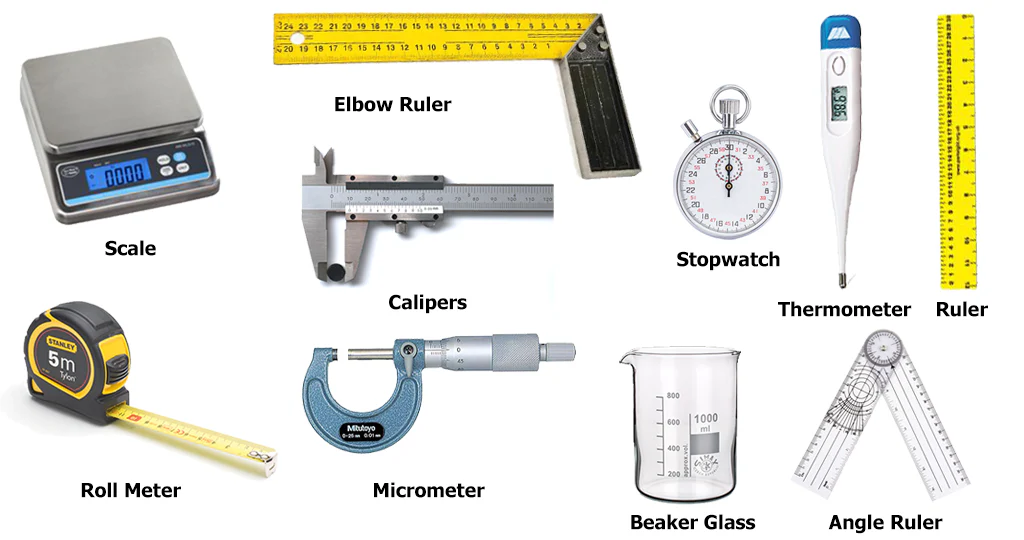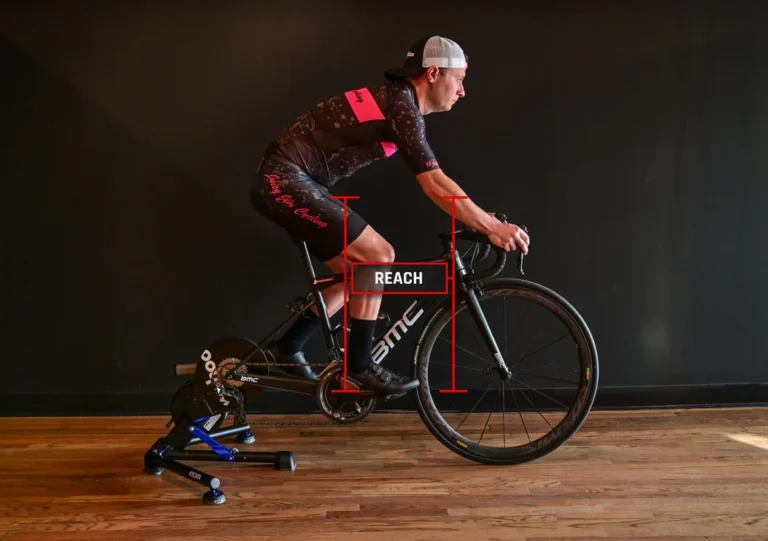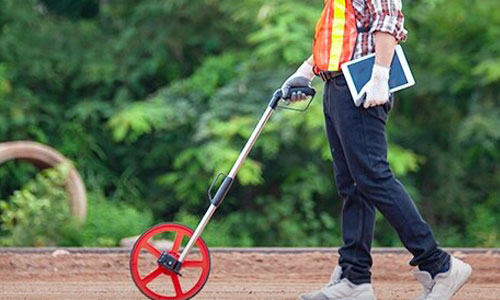Measuring Tools
Measuring Devices: How They Evolved and Why They Are Important Today Measuring devices are important tools which man has used along the path of human civilization to succeed in developing aspects of technology, science, and daily living. Since the dawn of civilization, humans have been in constant pursuit of better methods to measure physical parameters related to length, weight, volume, and time. These tools have transformed from mere simple manual devices into highly sophisticated instruments used in everything, starting from construction and ending with healthcare. In this paper, we will explore the history of measuring tools, their types and uses, further trends, and their importance to various industries.
History of Measuring Tools:
Measurement originated several thousand years ago; it is believed that early humans used parts of the body, like the hand or foot, as a reference to estimate the measurement tools of an object. However, it is inconsistent due to different body sizes among humans.
The Egyptians were among the first to standardise measuring systems of the human part of the body. They used a cubit defined as the length of the forearm measured tool from the elbow to the tip of the middle finger. Other ancient civilizations-the Mesopotamians, Chinese, Japanese and Greeks-also developed a system of measurement tools that led modern tools.
The Roman Empire also standardized the foot as a unit of length, weights, and balances for trade and commerce purposes. Individual rulers and governments began introducing standard units of measurement tools during the Middle Ages to ensure that trade was fairly conducted and architecture designs were more accurate.
Until the Industrial Revolution began in the 18th and 19th centuries, the quantum leap in precision and intricacy became common with measuring tools. With more exacting measurements called for by both machine tool and mass production methods, gauges, callipers, and micrometres were developed or invented.
Types of Measuring Tools:
There are various types of measuring tools whereby each of the tools measures a certain physical feature; these features include length, weight, volume and time space. Below are some of the most common types of measuring tools and their used: Below are some of the most commonly types of measuring tools ruler and their uses:
- For length, the following measuring tools are used:
Rulers and Tape Measures: These are rudimentary instruments of measuring and are usually up to one-foot length or one meter length. The latter, however, are versatile and come in various sizes and can range in meters or feet in length and are most commonly used in construction, carpentry and tailoring businesses.
Calipers: It is an instrument which is used to find distance by placing it on two opposite sides of an object. Some of them can be of digital type, Vernier type, or perhaps a dial type caliper. They therefore allow for tremendous accuracy, which in some instances may be Precise to the thousandth of an inch or millimeter.
Micrometers: These are gadgets employed in the estimation of small distances, majorly in mechanical engineering and in the process of cutting materials. They are mainly employed in thickness measurements of an object.
- Weight Measuring Tools
Balances and Scales: These are common machineries most often used in determining weights. Scales have existed for many centuries and can be categorised into various types such as the beam type and the spring type. People are now widely using the digital scales because they are accurate and efficient than the manual ones.
Load Cells: These are electronic devices which convert the amount of force that is applied to it into electrical signals. This information finds its use in the digital weighing scales of the present day world. They are important in such sectors as transport, construction and production.
- Volume Measuring Devices:
Graduated Cylinders and Beakers: Its typical uses include in laboratories where it is necessary to measure volume of the liquids. In comparison with beakers, graduated cylinders are better due to their slender design and higher division measurements.
Flow Meters: The flow meter on the other hand quantifies the amount of a fluid, liquid or maybe gaseous substance that is in a pipeline. The flow meters in use in the right image have especially very popular applications in water management, petroleum, and Cham industries.
- Time Measuring Instruments:
Clocks and Stopwatches: From sundials, which were very popular in the past, to atoms clocks of the present day, there exists a great variety in timekeeping instruments. Clocks and watches are typical examples of mechanical timekeepers and are a part of popular culture while stopwatches are incorporated in most of the more accurate time estimations – in sports and scientific pursuits, for instance.
Oscilloscopes and Timers: Let us review the way science and electronics in particular adjusts oscilloscopes and timers in order to measure time intervals to the smallest fraction of a second.
- Temperature Measuring Instruments:
Thermometer: Thermometers measure a tool that is very vital in several areas, for instance medical, weather and manufacturing industries. Kinds of thermometers include mercury filled thermometer, digital thermometer and an infrared thermometer.
Tools for Measuring Pressure
Thermocouples and Infrared Sensors: Manometers and barometers are familiar among people who deal with meteorological issues and aviation because the two instruments are used to measure pressure in the atmosphere.
- Pressure Measuring Tools:
Pressure gauges: are amongst the most popular devices for measuring the pressure in liquids and gases. They are primarily used in the oil and gas industry, automotive industry and in HVAC.
Measuring Tools Applications in a Range of Fields:
It is possible to observe that measurement instruments find their value in almost all aspects of the contemporary world. Here are a few instances demonstrating their use in diverse industries: Here are a few instances to illustrate some of the applications in varied fields:
Measuring tools Measuring tools remain crucial in construction and engineering activities as construction and Engineering Measuring tools are of great importance.
To ensure that buildings, roads, and bridges come out quite accurately tape measures, laser levels, and theodolites are employed. These tools afford accuracy down to the dimension and angle therefore ensuring the stability of the built structures.
Manufacturing and Machining These industrials entail manufacturing and Machining and both are highly sensitive to issues of precision. Micrometres, callipers and gauges are measuring instruments which are used to measure dimension in minutes for better fitting of parts and smooth running of machines. This is the case since in mass production quality control is highly dependent on measurement in an effort to maintain the output rates.
The basic types of measuring devices that are applied in the healthcare industry include basic equipment like thermometers, blood pressure measuring devices among others while some of the equipment are complex and sensitive in use and include ultrasound equipment and MRI among others. Such devices are used quite useful in the diagnosis as well as treatment of a number of diseases.
In aerospace and aviation, the accuracy of measurement tools may be a matter of life and death . In aerospace and aviation, the accuracy of measurement may be the thin line between life and death. There are also various devices used such as altimeters, air speed indicators, pressure sensors which are very essential in ensuring proper safety of the aircrafts or spaceships. In the design and the manufacturing of the tools of aerospace components, generic accurate measuring instruments are used by engineers.
Of course, measuring tools in agriculture will also do their part. Some of the metres include moisture metres, thermometers, and the flow metres enable the farmers to monitor the existing conditions of the environment that supports growth of crops. These tools help in effective management of water supplies in irrigation and control of temperature in green houses as well as optimising the condition of the soil.
Science and Research Precision is the word when it comes to working in laboratories. Volume measurement tools include pipettes, while balance and spectrophotometers are used in measurement of chemicals, solutions & biological specimens respectively. These principles post that to get reliable results, measurement should be precise in experiments.
Accuracy and Calibration:
The contributions of men of color to society is the reason why they matter.
Besides, most industries are concerned with processes where measurement accuracy is critical due to the fact that a relatively small error could have significant effects:
For example, medication dosage should be measured well to avoid giving excessive dosage; building designs hinge on accurate measurement, else these will cause the structure to collapse thus posing danger to individuals.
Calibration is the process of endorsing, reviewing the efficiency, accuracy of any measuring tool. Gauges and other measuring instruments might become unreliable after a while due to constant use and or perhaps losing their precision. By this method of quick tuning the device will be able to achieve the desired output constantly and without any discrepancy. This, in fact, is often necessary by law in many industries because of regulatory problems, which are kept by standards organisations.
Measuring devices: future directions for advancement:
Because of the rapid growth of technology, this field of measurement equipment is always changing. The following are some new developments in the design of measuring devices:
Digital and Smart Tools: Many standard measuring instruments have been digitized, for either enhancement or substitution of the conventional analog tools. Some of the examples of these are the digital calipers and the micrometers to make their readings to be displayed on the screen to reduce the amount of error that can be made by a human being. Smart tools that are part of the Internet or local network enable real-time data collection and analysis tools’ development.
Automation and Robotics Applications: Manufacturing requires many fabrication undertakings that entail great attention, and robots are equipped with sensors or measurement equipment. In turn, these robots are able to quantify their performance and modify it if it is necessary.







